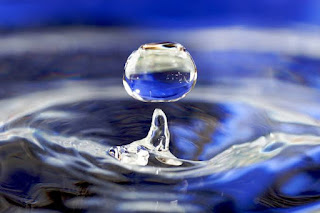Plastics And Climate Change
Plastics are directly derived from the refining of crude oil, natural gas and coal. As an element, plastics don’t naturally exist, and are manufactured artificially by mankind. Since they are not a naturally occurring substance, they do not decompose easily, and can take up to five hundred years to return to basic elements.
Therefore, every inch of plastic that has ever been manufactured exists in nature to this day. Unfortunately that means that plastic litters almost every corner of the globe, from frozen mountaintops to the thick sheets of ice which contain embedded plastic, to the deep ocean trenches thousands of feet below and on waterways globally. But most ubiquitous has to be the plastic found on dry ground, in the soil and literally everywhere you look.
Plastic is used everywhere in the world, and in every sector. From shower caps to detergent bottles, to cutlery and cars, and buildings and computers, plastic is used in one form or another by practically all of mankind.
 |
| Photo: Myrtle beach The digitel (flickr/creative commons) |
At the current trajectory, by the end of the 2020s emissions from plastics will reach 1.34 gigatons every year tying with 295 new coal plants each producing 500Mw. Annually, this industry releases 232 million tons of ghgs, levelling with 116 coal power plants. This is remarkable because coal power plants are the biggest source of standalone greenhouse gas emissions. By the half century mark, plastics will account for 56 gigatons which would be slightly more than 10% of the carbon budget.
Plastic releases emissions at every stage of its lifecycle: at extraction, production and refining, usage and consumption and as waste.
Extraction and transport of crude from site to the plant releases emissions, plastic itself produces direct emissions, leaking and flaring of methane as a natural gas during extraction, use of fuel in the extraction equipment during drilling, and emissions from clearing land to dig wells and lay pipelines. The entire process is basically using fossil fuels to mine new fossil fuels.
Plastic also releases emissions during the refining and manufacturing phase. Making of plastic means separating the components of crude and this is an energy intensive process. Greenhouse gases are produced in massive quantities, such that the plastic industry is on track to overtake the coal-power industry. This sector is the fastest growing industry in manufacturing. There basically exists very lax or nonexistent legislation or regulation of plastics especially in terms of its connection to climate change.
The process of making plastic, cracking of alkanes to make olefins to the polymerization of olefins to resins all produces high amounts of greenhouse gases, and the fossil fuels used also produce emissions.
Plastic waste is disposed in three main ways: landfilling which produces the least emissions but causes considerable groundwater and soil poisoning through leached chemicals from plastic. Methane also leaks from landfills. Recycling is the next option producing slightly more emissions than landfilling, but preventing the manufacture of new plastic and thus more emissions. However, only 9% of plastic is recycled. Most of it ends up in the open environment
Incineration is the last option for dealing with waste plastic and by far the most harmful to human health and climate. All the plastic burnt produces a high level of environmental contaminants which are released into the air and harm human health. Incineration is actually not a solution because all it does is transfer plastic waste from solid to gaseous form but equally as dangerous and polluting.
Plastic packaging and wrapping is 40% of all plastic. In 2015 for example, this type produced over 15 million tons of carbon dioxide when burnt. Worryingly, a lot more plastic is openly burnt without any kind of regulation or air protection.
Plastic that is just left there on the ground without any means of disposal releases greenhouse gas emissions when hit by sunlight causing it to slowly degrade.
Plastic waste is a very big problem in the oceans. Plastic litter in the ocean traverses the depths; from the surface to the sea floor. It greatly interferes with the ability of oceans to trap and store carbon, because micro plastic interferes with plankton, tiny ocean microorganisms that sequester carbon into the depths of the ocean and prevent it from being re-released.
Micro plastic, which is the most prevalent type, negatively affects the metabolism of these microorganisms, their ability to multiply and reproduce and just their existence. Microplastic resembles the food these organisms depend on and ingesting it kills them.
Oceans are the biggest carbon sinks in the planet, and since the beginning of human caused climate change, they have removed between 20 to 40% of atmospheric carbon. Surface level sea plastic is a very tiny percent of the total. The majority 99% is in the deep seas. Estimates have it that 165 million tons of plastic are already in the ocean and 9 million more make its way there each year. Statistics state that he world has made over 9 billion tons since the second half of the 20th century. Marine animals frequently mistake plastic for food and eat it to their death. Others are killed by being trapped in plastic.
Despite all this, the petrochemicals and associated plastic industry is still growing exponentially, and given the trend, at the half mark of the 21st century, emissions from plastic will be 2.8 gigatons of carbon dioxide yearly, which is a lot. In light of this, passing the 1.5 degrees threshold of the Paris Agreement is not just likely but will be exceeded.
Some of the measures to tackle the problem of plastic waste and climate change is the most obvious one: enforce a firm ban on the manufacture and utilization of single use plastic. This is the worst performing plastic in terms of environmental harm and climate change.
This of course is associated with the most enduring and long term solution to climate change: stop drilling for fossil fuels. That is, keep it and let it remain in the ground. Fossil fuels are not only dangerous to climate, they also harm human health and degrade the environment. Besides, they’re being steadily overtaken by renewable fuels, which are cleaner and suitable for climate and health.
Another solution is to encourage a circular economy, that is, zero wastage. Plastic should not only be reduced but recycled and reused as much as possible. Plastic items can be repurposed over and over to make other things and so reduce the volume of waste in the physical environment.
This however has to work hand in hand with policy and regulation, which should be aimed and enforcing high reduction goals for the plastic industry and making them responsible for cleaning the environment of the non-biodegradable waste they produce.
Use of renewable energy to produce plastic would cut emissions from fuel use in manufacturing.
Another thing would be to have alternatives to plastic, which are good for nature and people. That is, natural materials that are durable and clean.
Bioplastics are a type of plastic that are made from 20% renewable feedstock. This growing industry will be worth 44 billion dollars in 2022. These types of plastic have a lower (though not non-existent) carbon footprint, they decompose a little faster than synthetic plastics and are less toxic. They are safer for human health because they do not contain bisphenol-A. This chemical found in fossil fuel (synthetic) plastic interferes with the human endocrine system.
There are two types of bioplastics. Biodegradable plastic which means they can be broken down completely to basic natural elements like carbon and water, and biobased plastics which are plastics that are not made from fossil fuels but from organic sources such as maize, sugarcane, castor and algae.
The disadvantage with bio based plastics is that they take up land that could be used for other land uses such as agriculture. They use quite a lot of energy and release carcinogens when being transformed from raw materials to plastic. They also use a lot of energy to dispose off in industrial composting. The other hurdle involved in this process is that facilities to do that are not as many.
Biodegradable plastic can be broken down and so is used in many applications, from medical uses like sutures and in surgery, slings and bone plates and skin replacements, in single use plastic and food wrapping.
It can be produced from algae as polyhydroxyalkanoate (PHA), with innovative companies using crop residue and other organic leftovers as the source. This type of plastic can be composted completely and does not affect marine life negatively because it is completely broken down by microbes and in fact produces food for bacteria and fish.
Others like Stanford University are capturing methane from wastewater or landfills and reverse engineering it to bioplastic.
Such processes are more environmentally safe and healthy and would go a long way to reduce the plastic menace and greatly decrease its effect on climate change and the environment. If scalable, they can reduce the significantly higher price of bio plastics and make them viable for large scale use.




Comments
Post a Comment